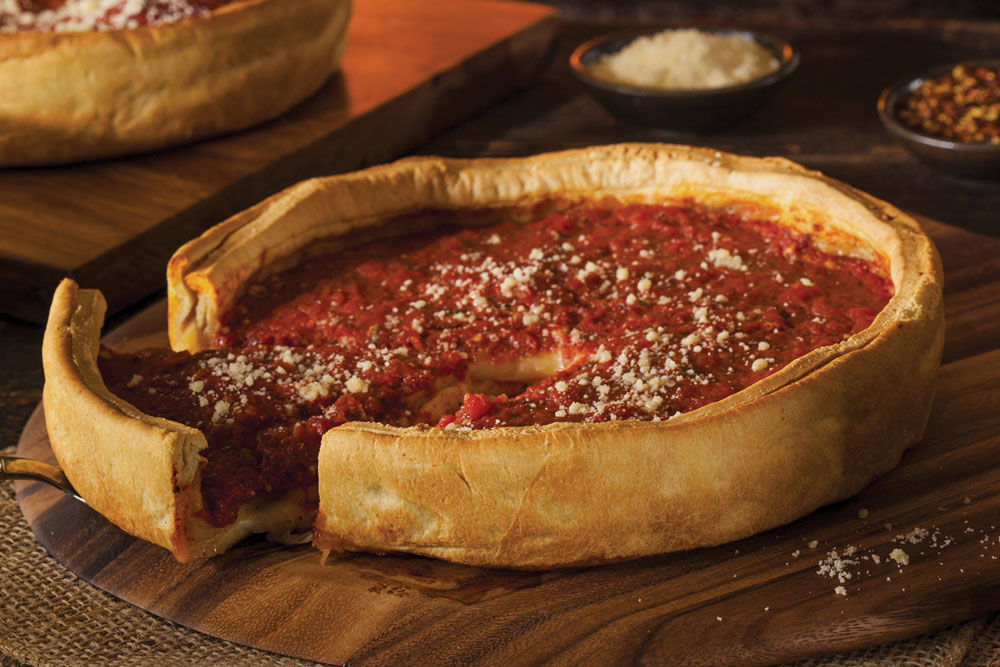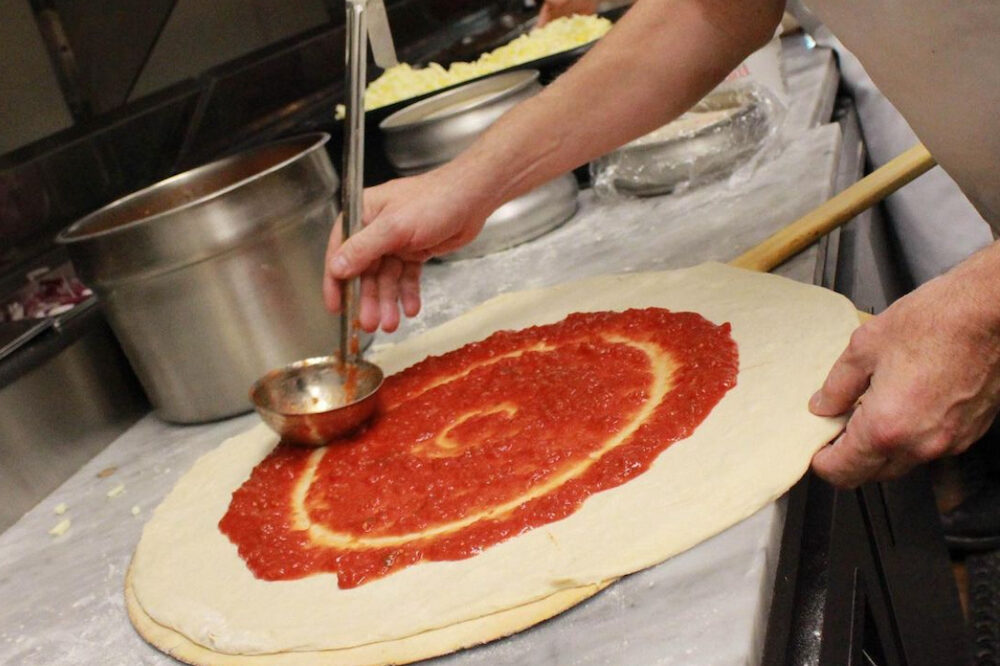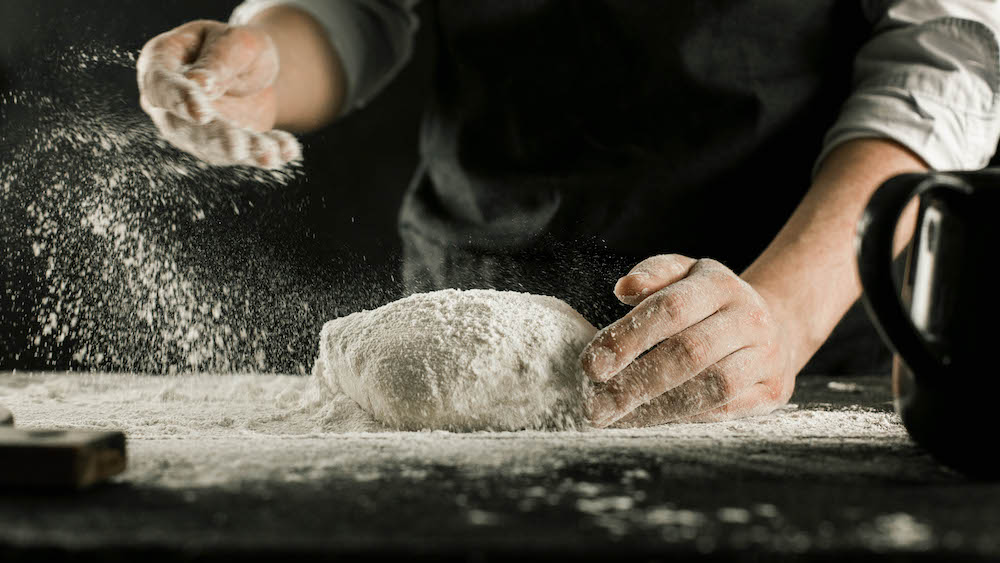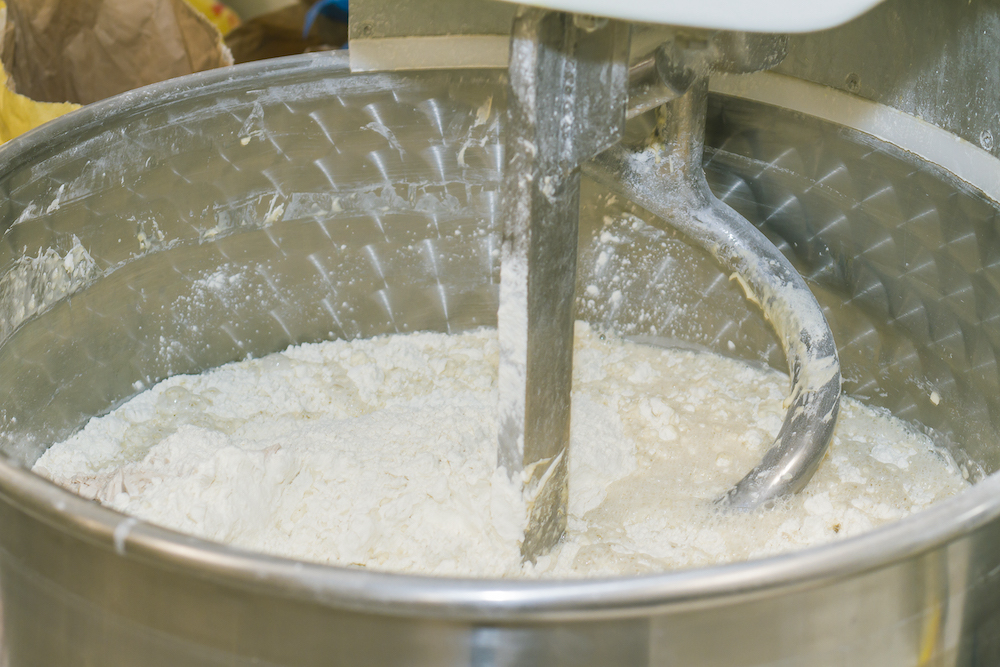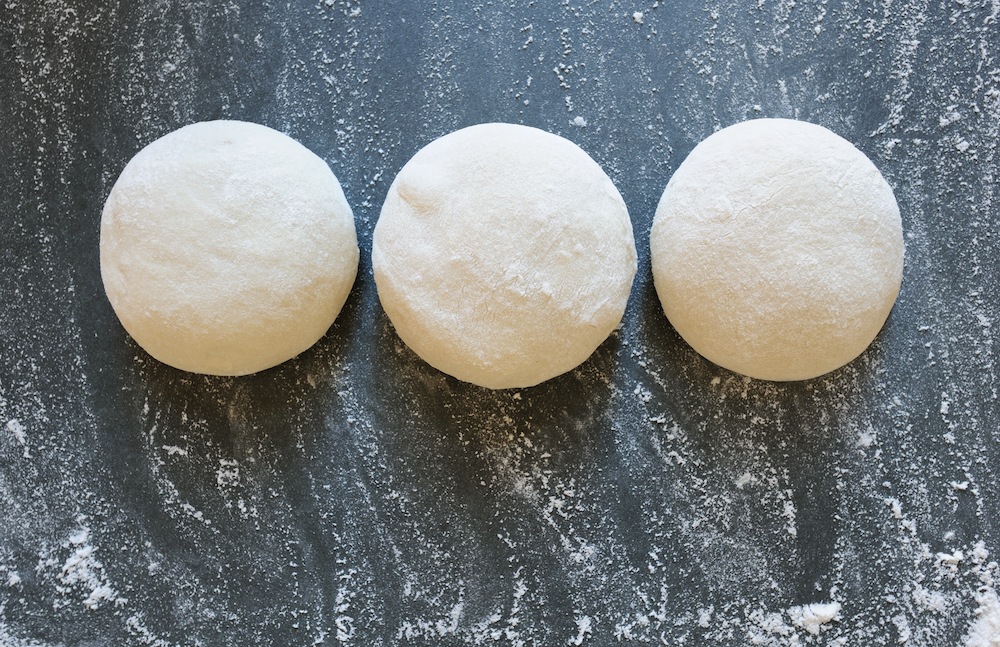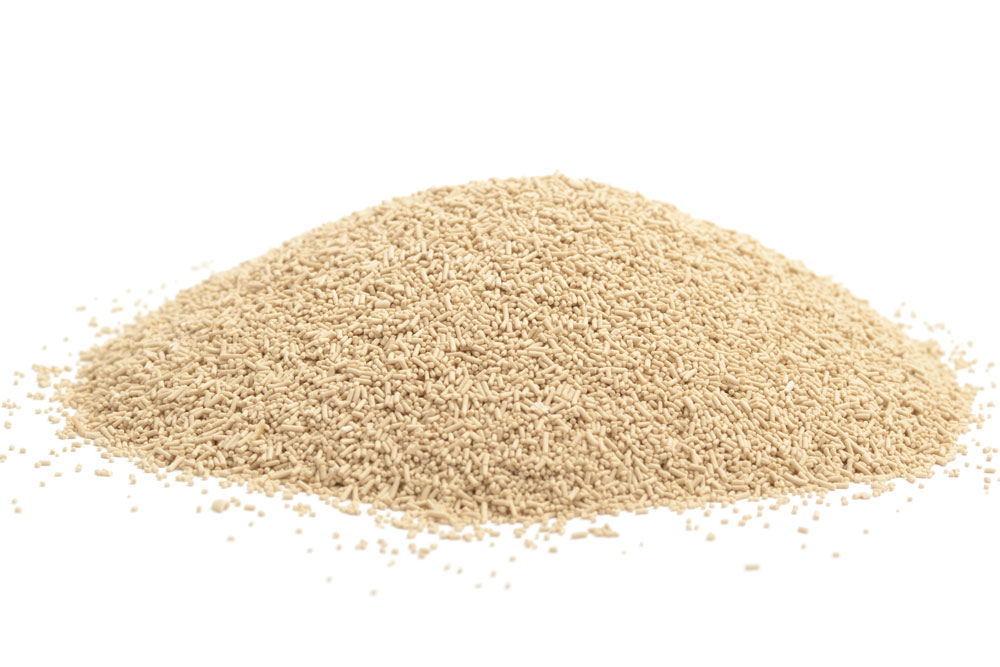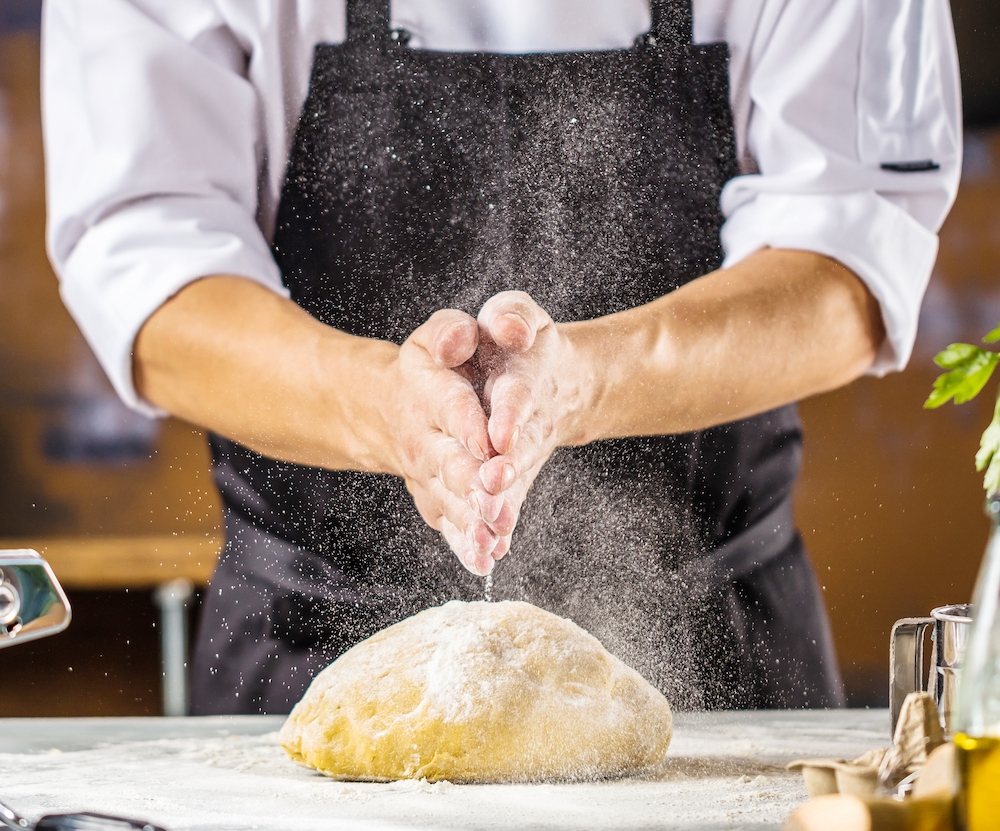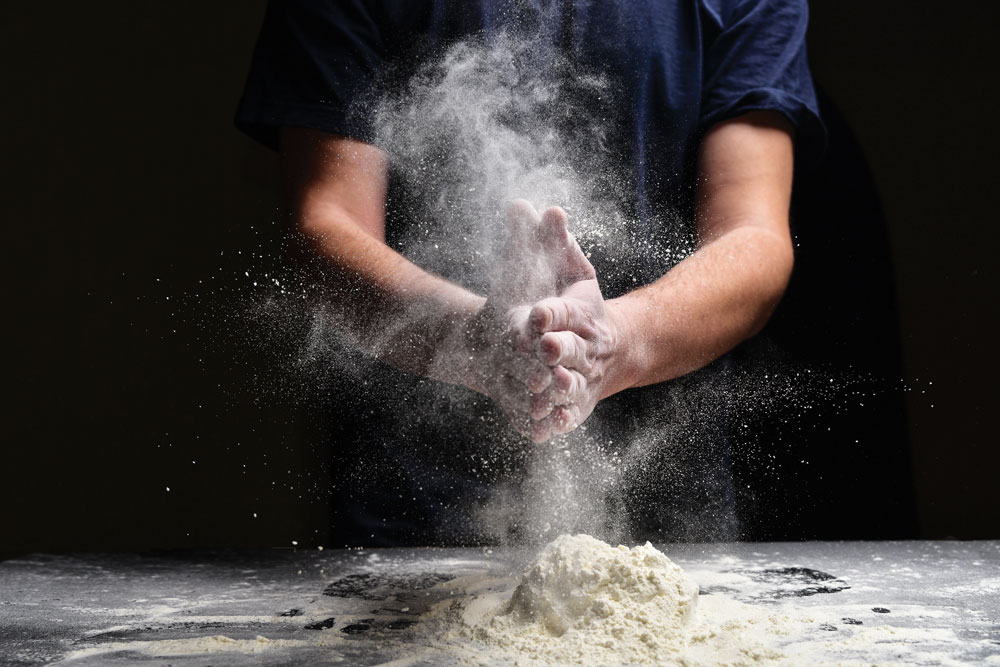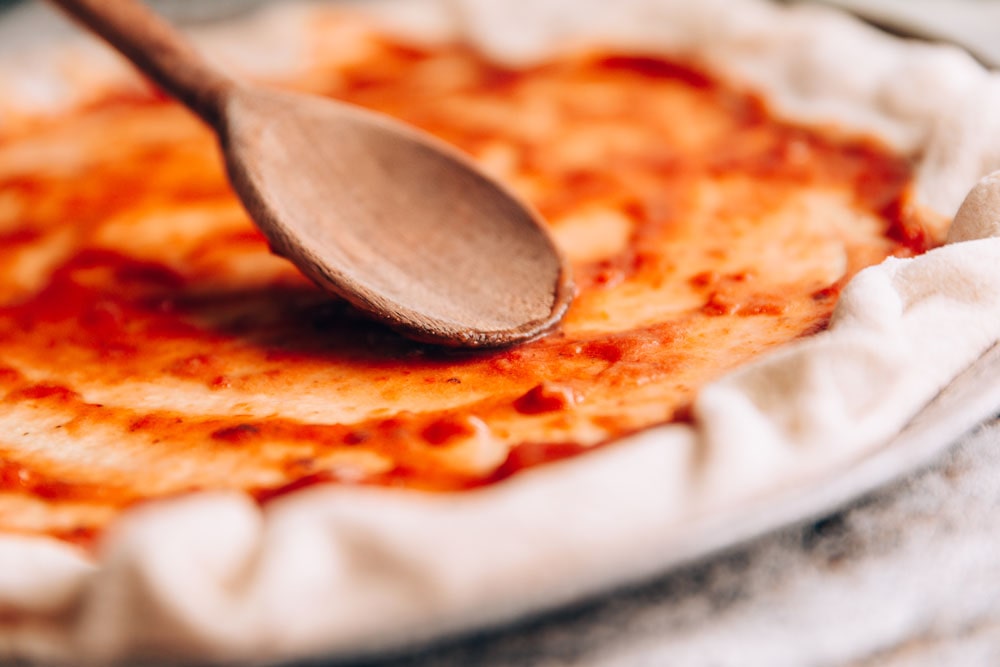- Try using flour with a lower protein content, such as an all-purpose flour or H&R, a winter wheat bread flour.
- By mixing your regular pizza flour with an all-purpose flour, you can create a flour blend that works well for your specific application and shop conditions.
Related: How to solve your pizza dough’s bubble troubles
Q: Our deep-dish pizzas are too tough and chewy. What’s the secret to a light, tender deep-dish crust?
A: This problem can be addressed in a number of ways. One way would be to add enough reducing agent—such as L-cysteine, glutathione or protease enzyme—to the dough to sufficiently weaken the flour protein. This will yield a more tender crust, but the dough will have a very short shelf life, both refrigerated and at room temperature, and it will be more prone to inconsistent performance due to temperature differences of the finished (mixed) dough. You may also have flavor problems, and dough stickiness will likely be a major complaint.
You could also use fermentation to mellow the flour proteins for a more tender finished crust. This will require paying careful attention to the finished dough temperature and fermentation time; we usually see some combination of both room temperature and refrigerated fermentation temperature employed, although a longer refrigerated fermentation time—five or more days—will sometimes do the trick. However, such a long storage time in the cooler can be problematic.
In my experience, it’s better to use flour with a lower protein content, such as an all-purpose flour or H&R, a winter wheat bread flour. My preferred strategy is to create a blend of your regular pizza flour with an all-purpose flour. Thus, you can create a flour blend that works well for your specific application and shop conditions.
I was recently in a pizzeria where we were developing a deep-dish pizza crust. Using their regular flour (12.6% protein), the finished crust was unacceptably tough and chewy. But when we made it from a blend of 50% regular pizza flour and 50% all-purpose flour, the resulting crust had exactly the eating properties we were looking for. The crust was light and very tender, and it retained these properties even after the pizza had cooled down through a simulated delivery or carryout!
When using a blended flour, you can usually follow your regular dough management procedure. You just need to make sure that you proof the dough to the desired height before dressing it as a pizza for baking or par-baking or before storing it in the cooler for later use. To determine the right mix of your regular flour and the substitute flour, you’ll probably have to experiment a little bit. It will depend on a number of factors, such as the strength of your regular flour, the strength of the substitute flour and your dough management procedure.
Before he passed in December 2020, Tom Lehmann was a longtime contributor to PMQ Pizza Magazine and served as the director of bakery assistance for the American Institute of Baking. This article appeared in a previous issue of PMQ.



